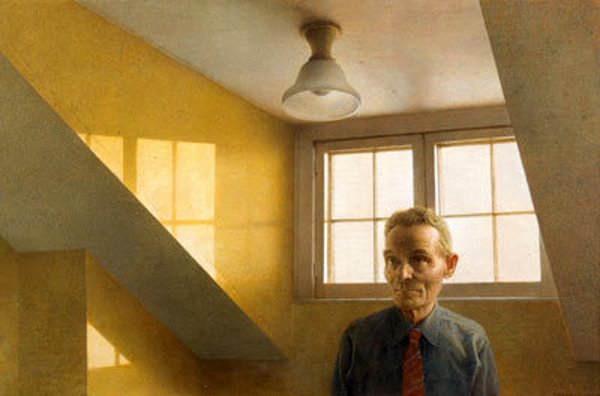Robert Vickrey (August 26, 1926 – April 17, 2011) was a crucial figure in the mid-twentieth-century renaissance of egg tempera, a demanding “old school” technique that he explored over six decades. Egg tempera, which is a paint made by mixing pigments with egg, mainly egg yolk, to produce a “dull finish.”
Vickrey’s work has an reminiscent feel of Winslow Homer with lonely figures and striking realism. His unnerving depiction of impending disaster and dread made him a leading figure in the magic realism schools. Magic Realism was developed as an art movement in the years after World War 1. Representational art, mixed with elements of fantasy was often typified by remarkable detail and sharp focus and taps into the emotional reservoirs within all of us.

Vickrey’s paintings cast an undeniable spell of mystery and capture the intimate emotion of figures in commonplace settings. It’s as if he intrudes gently into the private thoughts and fantasy life of his subjects. Light, shadow, color and composition intertwine to create a stillness and stark contrast that transcends ordinary.
Vickrey’s paintings are among the most intriguing and unique of all American Artists who specialized in realism and egg tempera.
In 1948, Robert Vickrey found a photograph of two nuns from the Daughters of Charity of St. Vincent de Paul. He was fascinated by the image and created many paintings of nuns in austere and often sinister surroundings. In Fear, Vickrey used egg tempera paint to create a detailed view of a barren landscape, in which a nun appears to be running in distress.
In the 1950’s and ’60’s Vickrey was a highly visible artist. He was also commissioned to paint dozens of portraits for the cover of Time, notably a portrait from life of the Rev. Dr. Martin Luther King Jr. for the magazine’s Man of the Year issue in 1964. Vickrey created 78 covers for TIME magazine over the course of 11 years, from 1957 to 1968.
Today over 80 museum collections include his works in their permanent collections including the Metropolitan Museum of Art, Whitney Museum, Brooklyn Museum, Smithsonian American Art Museum, and the Corcoran Gallery.
















